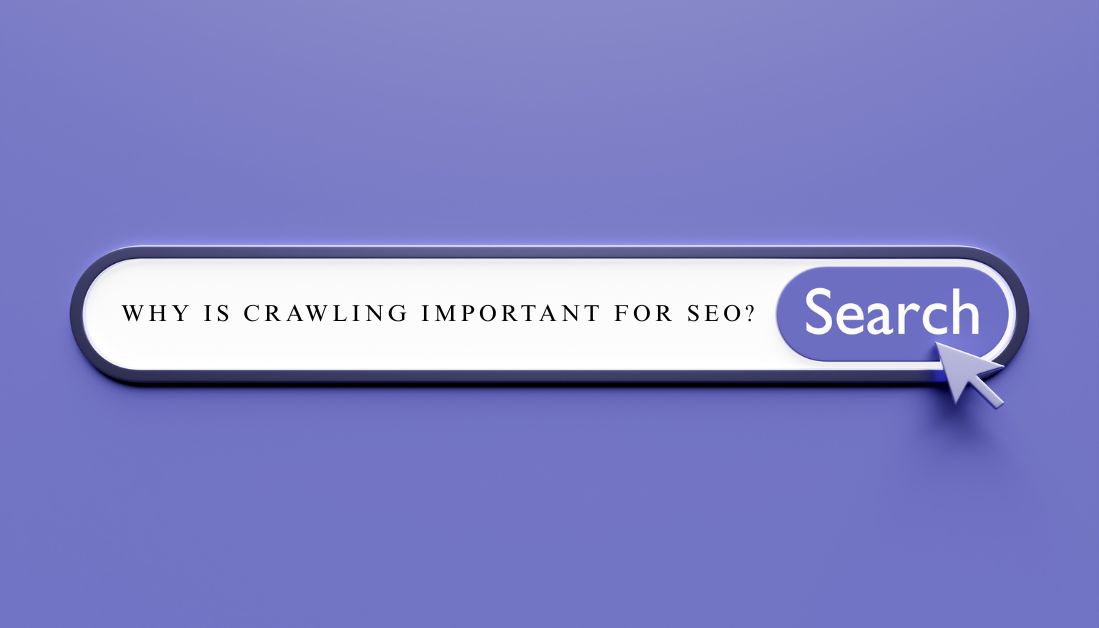Understanding the Importance of Crawling in SEO for Website Ranking
In the world of SEO (Search Engine Optimization), one of the most important concepts to understand is crawling. If you want your website to rank on Google, Bing, or any other search engine, it is essential to ensure that your website is properly crawled and indexed. Without crawling, your website will not appear in search results, and potential visitors won’t be able to find you.
In this blog, we will explain what crawling is, how it works, why it is important, and how you can optimize your website for better crawling and ranking in search engines.
What is Crawling and How Does It Work?
Definition of Crawling in SEO
Crawling is the process where search engine bots (also known as web crawlers or spiders) scan web pages on the internet to understand their content and structure. These bots move from one page to another through internal links and external links, collecting data to index websites in search engine databases.
How Search Engine Crawlers Work
- Finding New Content: Search engine bots start by visiting known websites and following links to discover new pages.
- Scanning Web Pages: The bots analyze text, images, videos, and other content on the page.
- Following Links: Crawlers navigate through different pages by clicking on links.
- Storing Data: After scanning, search engines store the information in their index.
- Ranking in Search Results: Once indexed, pages appear in search results when users search for related topics.
Why is Crawling Important for SEO?

Improves Website Visibility
If search engines cannot crawl your website, they cannot index it, which means your site will not appear in search results. This directly affects your website’s visibility and organic traffic.
Helps in Ranking Higher
A properly crawled and indexed website has a better chance of ranking higher in Google search results. When search engines understand your content, they can show it to the right audience.
Ensures Fresh Content Indexing
If you frequently update your website with new blogs, articles, or products, crawlers ensure that these updates are indexed and available to users searching for relevant topics.
Helps Search Engines Understand Your Website
A well-structured website makes it easier for search engines to understand what your site is about, helping in better SEO rankings.
How to Optimize Your Website for Better Crawling?
Create a Sitemap
A sitemap is a file that lists all important pages of your website. Submitting a sitemap to Google Search Console helps search engine bots find and index your pages quickly.
Use a Robots.txt File
A robots.txt file tells search engine bots which pages to crawl and which pages to avoid. This helps in managing which parts of your website should appear in search results.
Improve Website Speed
Search engine crawlers prefer websites that load fast. To improve website speed, optimize images, use compressed files, and enable browser caching.
Fix Broken Links
If your website has broken links, search engine crawlers may struggle to navigate through your site, which can affect SEO rankings. Use tools like Google Search Console to identify and fix broken links.
Ensure a Mobile-Friendly Design
Since most users browse on mobile devices, having a mobile-responsive website ensures better crawling and ranking.
Optimize Internal Linking
By adding internal links to your content, you help crawlers discover more pages on your website, improving indexing and ranking.
Regularly Update Your Content
Fresh and relevant content keeps crawlers visiting your site frequently. Updating old blog posts, adding new information, and optimizing keywords help improve SEO.
Common Crawling Issues and How to Fix Them
Blocked Pages in Robots.txt
If your robots.txt file mistakenly blocks important pages, search engines will not be able to crawl them. Always check your robots.txt file to ensure that no essential pages are blocked.
Slow Website Loading Speed
A slow website can cause search engine crawlers to leave before they finish scanning your site. Optimize images, reduce unnecessary scripts, and use a content delivery network (CDN) to improve speed.
Duplicate Content Issues
Having duplicate content can confuse search engines and lead to lower rankings. Use canonical tags to tell search engines which version of a page to index.
Not Submitting a Sitemap
If you don’t submit a sitemap, search engines might miss some of your pages. Always submit your XML sitemap to Google and Bing for better crawling.
Too Many Redirects
Excessive 301 redirects can make it difficult for crawlers to navigate your site. Avoid unnecessary redirects and keep website structure simple.
How to Check If Your Website Is Being Crawled?
To check if Google is crawling your website, follow these methods:
- Google Search Console: Use the Coverage Report to see which pages Google has indexed.
- Site Search: Type
site:yourwebsite.comin Google search to check how many pages are indexed. - Server Log Analysis: Check your website’s server logs to see visits from Googlebot or other search engine crawlers.
- SEO Tools: Use tools like Screaming Frog, Ahrefs, or SEMrush to analyze your website’s crawling status.
Conclusion
Crawling is the first and most crucial step in SEO. If your website is not crawled, it will not be indexed, and your audience will not find your content on Google. By ensuring proper website structure, using sitemaps, optimizing speed, and fixing errors, you can improve your website’s crawling and ranking.
If you want to improve your website’s SEO and boost your search rankings, start optimizing for better crawling today. For more expert guidance, visit Brand Masterz India.

